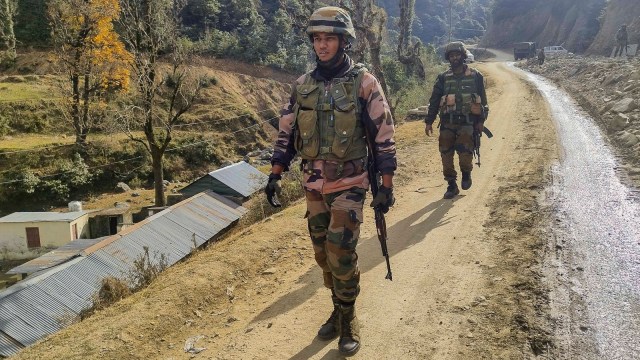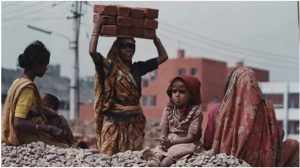Behind Jammu terror attacks, small units of Lashkar-e-Taiba and Jaish-e-Mohammad
While the Army has killed around 30 terrorists — majority of them Pakistani — during the period since October 2021, it has also lost about 30 personnel, including officers.
 Army personnel during a cordon and search operation after two Army vehicles were ambushed by terrorists on Thursday, in Poonch district. (PTI Photo)
Army personnel during a cordon and search operation after two Army vehicles were ambushed by terrorists on Thursday, in Poonch district. (PTI Photo)After a careful study of all the attacks since October 2021, security forces now believe that not more than two groups — comprising militants from Lashkar-e-Taiba and Jaish-e-Mohammad — have been involved in ambushes that have killed about 25 personnel in the last two-plus years.
Sources in the security establishment said while one of the groups is suspected to have just two men, including a Pakistani terrorist, the other may have three-five members led by a highly-trained commander. Overall in the Jammu-Poonch-Rajouri region, the sources suspect a presence of around 15-20 Pakistani terrorists.
While the Army has killed around 30 terrorists — majority of them Pakistani — during the period since October 2021, it has also lost about 30 personnel, including officers.
One of the two groups — which, sources said, has gone dormant now — is suspected to be behind the first spate of shootouts with the armed forces which started on October 11, 2021, incidentally in the Dehra ki Gali jungles where the latest ambush (on December 21) took place. In this, five Indian Army personnel were killed while resting in a tent after conducting an intelligence-based search operation. When forces started searching the jungles for the terrorists, four more soldiers were killed over the next seven days in Bhata Dhuria jungles nearby.
The next major attack in the region took place only on August 11, 2022, when terrorists stormed the Pargal camp of the Indian Army in Rajouri and killed four soldiers.
It is suspected that ambushes following this have all been carried out by the other group.
An armed forces officer posted in Jammu told The Indian Express that the commander heading this group along with his team has hitherto avoided taking shelter in the houses of locals, which often leads to such operatives being arrested or killed within a few months of infiltration.
“This group lives in caves and rarely leaves the jungle. They do not even use dhuks (makeshift shelter made by shepherds in the hills). They maintain minimal contact with locals for logistical support such as food and gas cylinders. And the commander does not deal directly with the courier. His associate passes on instructions and the local support leaves the required item at a designated place in the jungle which they pick up at their time and day of choosing,” the officer said.
Over the last year and a half, security forces have picked up a few such locals and even interrogated them. But none seem to have seen the commander or know his name, even a pseudonym, said sources.
Sources said in May 2022, after receiving an input, Army’s paratroopers had even laid a trap around a place in Kandi forest from where the group was supposed to pick up its food. But for at least three days, it did not come. On May 5, it engaged in a gunfight with the paratroopers in which five Indian Army men were killed.
The group communicates within itself or with the local support through a radio frequency messenger. “The messages in this are encrypted and cannot be intercepted. Efforts to zero in on the location of their devices have been futile as it often shows in a range of one square kilometer. It’s counter-productive to do an operation based on such diffused coordinates,” a security establishment officer said.
“During ambushes, the group rarely uses burst fire. They seem to be trained to hold their nerve in a gunfight and conserve bullets unlike the fidayeen who come and fire randomly,” said a defence source.
Officers, however, pointed out that the commander appears to have a penchant for publicity. “He sometimes roams around villages and gets his pictures clicked from behind and puts them on his propaganda channel. He has already been shooting videos of the ambushes. We will get this group soon,” an officer said.
Sources said Pakistan has been trying to destabilise the Jammu region since 2020 by pushing in more terrorists in the region and targeting both the armed forces and the Hindu community. This has resulted in a comparatively higher number of encounters with foreign terrorists. These efforts have been aided by the thinning down of armed forces in the region due to the situation on the Sino-India border.







